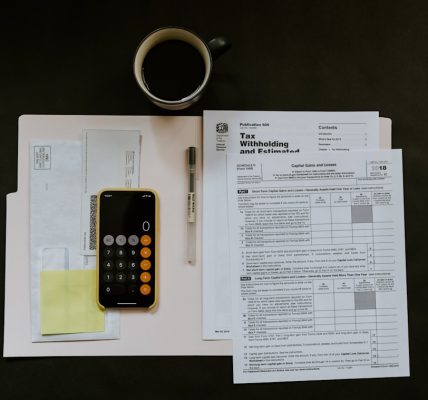Sezia, also known as seborrheic dermatitis, is a common skin condition that mainly affects the scalp, but can also occur on other oily areas of the body such as the face, chest, and back. It is characterized by red, itchy, and flaky skin, and can be a chronic condition for some individuals. Sezia is not contagious and is not caused by poor hygiene. It is believed to be related to an overgrowth of yeast on the skin, as well as an inflammatory response from the body. While it can be a frustrating and uncomfortable condition, there are treatments available to help manage the symptoms and improve the overall health of the skin.
Sezia is a chronic condition that can come and go throughout a person’s life. It is often worse during times of stress or illness, and can be triggered by certain factors such as cold, dry weather, hormonal changes, and certain medications. While it is not a serious medical condition, it can have a significant impact on a person’s quality of life, causing embarrassment and discomfort. It is important for individuals with Sezia to seek proper treatment and make lifestyle changes to manage their symptoms and prevent flare-ups.
Key Takeaways
- Sezia is a common skin condition caused by the overgrowth of yeast on the skin, leading to inflammation and irritation.
- Causes of Sezia include genetics, hormonal changes, stress, and certain medical conditions.
- Symptoms of Sezia may include redness, itching, flaking, and greasy or dry skin on the scalp, face, or other areas of the body.
- Diagnosing Sezia involves a physical examination and possibly a skin scraping or biopsy to confirm the presence of yeast.
- Treatment for Sezia typically involves antifungal medications, medicated shampoos, and topical creams to reduce yeast overgrowth and inflammation.
- Lifestyle changes for managing Sezia may include avoiding triggers, practicing good hygiene, and using gentle skincare products.
- Complications of Sezia can include secondary bacterial infections, hair loss, and psychological distress from the visible symptoms.
Causes of Sezia
The exact cause of Sezia is not fully understood, but it is believed to be related to a combination of factors including genetics, hormones, and the presence of a yeast called Malassezia on the skin. This yeast is naturally present on the skin, but in individuals with Sezia, it may grow out of control and trigger an inflammatory response from the immune system. This can lead to the characteristic redness, itching, and flaking associated with Sezia. Additionally, certain environmental and lifestyle factors can contribute to the development and exacerbation of Sezia. These may include stress, cold weather, oily skin, and certain medications.
Genetics may also play a role in the development of Sezia, as it tends to run in families. Hormonal changes, such as those that occur during puberty or with certain medical conditions, can also trigger or worsen Sezia. It is important for individuals with Sezia to be aware of these potential triggers and take steps to manage them in order to reduce the frequency and severity of flare-ups.
Symptoms of Sezia
The symptoms of Sezia can vary from person to person, but commonly include redness, itching, and flaking of the affected skin. On the scalp, this may appear as dandruff, with white or yellowish flakes that may be greasy or waxy. On other parts of the body, such as the face or chest, Sezia may cause red patches with greasy scales. These symptoms can be mild or severe, and may come and go over time.
In addition to the physical symptoms, Sezia can also have a significant impact on a person’s emotional well-being. The visible signs of Sezia can be embarrassing and may lead to self-consciousness and social withdrawal. The itching and discomfort associated with Sezia can also be distressing and affect a person’s quality of life. It is important for individuals with Sezia to seek treatment for their symptoms in order to improve their overall well-being.
Diagnosing Sezia
“`html
| Metrics | Value |
|---|---|
| Symptoms | Itchy, red, scaly rash on the skin |
| Diagnostic tests | Skin scraping, Wood’s lamp examination, culture test |
| Common affected areas | Scalp, face, ears, chest, back, underarms, and groin |
| Treatment | Antifungal creams, shampoos, oral medications |
“`
Diagnosing Sezia typically involves a physical examination by a healthcare professional. The doctor will examine the affected skin and may ask about the individual’s medical history and any family history of skin conditions. In some cases, a skin biopsy may be performed to rule out other possible causes of the symptoms.
It is important for individuals with symptoms of Sezia to seek medical attention in order to receive an accurate diagnosis and appropriate treatment. While Sezia is not a serious medical condition, it can have a significant impact on a person’s quality of life if left untreated.
Treatment for Sezia
Treatment for Sezia typically involves a combination of medicated shampoos, creams, and lifestyle changes. Medicated shampoos containing ingredients such as ketoconazole, selenium sulfide, or zinc pyrithione can help reduce the overgrowth of yeast on the scalp and alleviate symptoms such as itching and flaking. These shampoos should be used regularly as directed by a healthcare professional.
In addition to medicated shampoos, topical creams or ointments containing corticosteroids or antifungal agents may be prescribed to reduce inflammation and control the growth of yeast on the skin. These medications should be used as directed by a healthcare professional in order to avoid potential side effects.
In some cases, oral medications such as antifungal agents or immunomodulators may be prescribed for severe or persistent cases of Sezia. It is important for individuals with Sezia to follow their healthcare professional’s recommendations for treatment in order to effectively manage their symptoms.
Lifestyle changes for managing Sezia

In addition to medication, there are several lifestyle changes that individuals with Sezia can make to help manage their symptoms and prevent flare-ups. These may include:
– Gently cleansing the affected skin with mild soap and water
– Avoiding harsh skincare products that may irritate the skin
– Using a moisturizer to keep the skin hydrated
– Managing stress through relaxation techniques such as yoga or meditation
– Avoiding excessive sun exposure
– Eating a healthy diet rich in fruits, vegetables, and whole grains
– Avoiding alcohol and tobacco
It is important for individuals with Sezia to work closely with their healthcare professional to develop a comprehensive treatment plan that includes both medication and lifestyle changes in order to effectively manage their symptoms.
Complications of Sezia
While Sezia is not a serious medical condition, it can lead to complications if left untreated. These may include secondary bacterial infections of the skin due to scratching and open sores, as well as emotional distress due to the visible signs of the condition. In some cases, severe or persistent Sezia may also lead to hair loss on the scalp.
It is important for individuals with Sezia to seek proper treatment for their symptoms in order to prevent these potential complications. By working closely with a healthcare professional and making lifestyle changes to manage their symptoms, individuals with Sezia can improve their overall well-being and reduce the impact of this chronic skin condition on their daily lives.
If you’re interested in learning more about sezia, you should check out this article on bibbywalker.com. It provides valuable information on the causes, symptoms, and treatment options for sezia, helping you better understand this common skin condition.
FAQs
What is sezia?
Sezia is a skin condition characterized by red, itchy, and flaky patches on the skin. It is commonly associated with dandruff and can occur on the scalp, face, ears, and other oily areas of the body.
What causes sezia?
Sezia is caused by an overgrowth of a type of yeast called Malassezia on the skin. This yeast is naturally present on the skin, but an overgrowth can lead to sezia symptoms.
What are the symptoms of sezia?
Symptoms of sezia can include red, itchy, and flaky patches on the skin, as well as dandruff on the scalp. These symptoms can be mild to severe and may come and go over time.
How is sezia treated?
Sezia can be treated with antifungal medications, medicated shampoos, and topical corticosteroids. It is important to follow a treatment plan prescribed by a healthcare professional to effectively manage sezia symptoms.
Can sezia be prevented?
While sezia cannot always be prevented, certain measures can help reduce the risk of developing the condition. These include practicing good hygiene, managing stress, and avoiding triggers such as certain skincare products or environmental factors.




